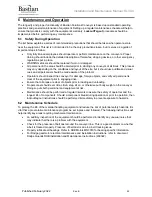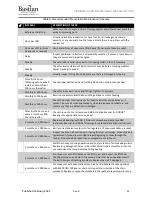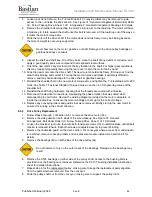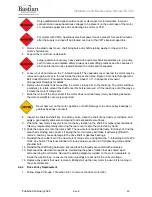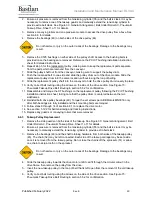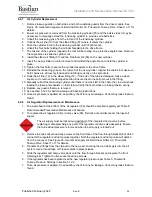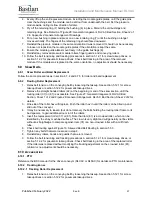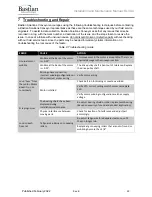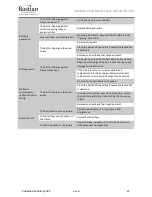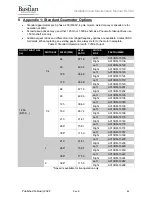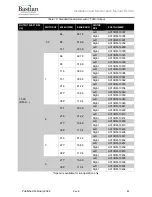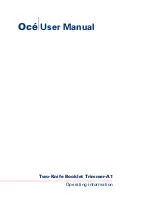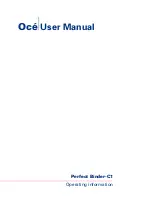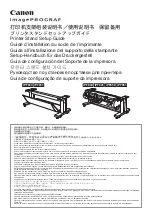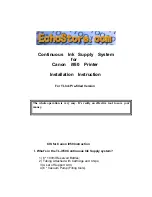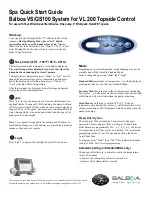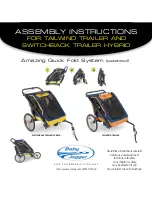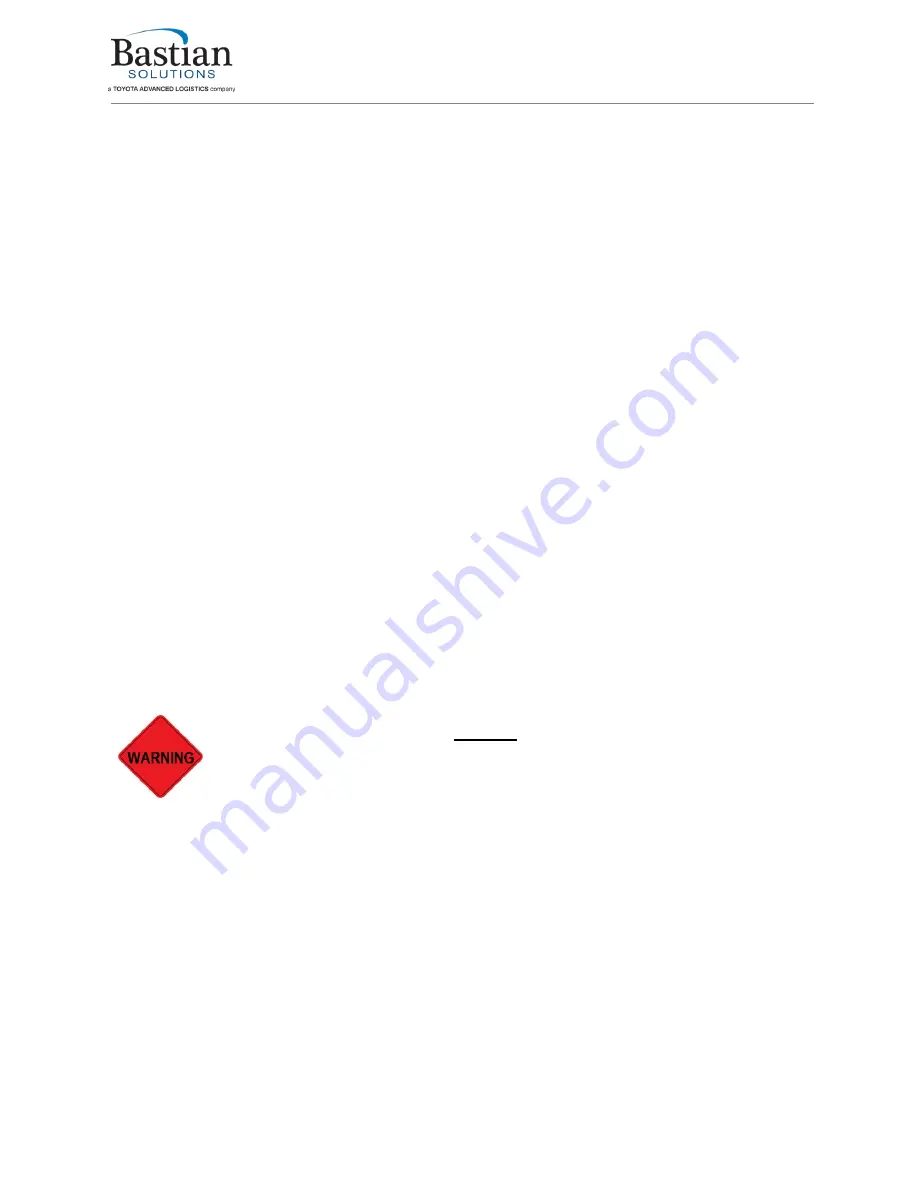
Installation and Maintenance Manual: RLVAC
Published February 2022
53
6.6.7 Air Cylinder Replacement
1. Remove takeup guards on both sides, and both underside guards from the drive module. See
Figure 30: General Arrangement, Belt Under Roller AC, Pneumatic Takeup Drive, Sheet 1 of 1 for
details.
2. Ensure air pressure is removed from the tensioning cylinder (55) and the belt is slack. It may be
necessary to manually extend the tensioning cylinder to provide extra belt slack.
3. Unbolt the tensioning yoke from the rod end of the tensioning cylinder.
4. Unhook the air line (19) from the elbow fitting (57) where it enters the cylinder.
5. Push the cylinder rod into the tensioning cylinder until it bottoms out.
6. Unbolt the four bolts holding the cylinder faceplate to the drive frame.
7. The tail end of the cylinder (opposite the rod) will be resting on a protective angle brace. Remove
the angle brace to slide the cylinder out.
8. Install the elbow air fitting (57) and the breather vent (56) on the new cylinder.
9. Insert the new cylinder rod into its mount and reinstall the angle brace to hold the cylinder in
place.
10. Tighten the four bolts to secure the cylinder faceplate to the drive frame.
11. Reinstall the tensioning yoke on the rod end of the new cylinder. Inspect the chains to make sure
both chains are still evenly tensioned and sitting correctly on the sprockets.
12. Hook the air line (19) to the elbow fitting (57). If the end of the tube is damaged, make a clean
square cut to remove the damaged section. Ensure the air line bottoms out in the fitting.
13. Manually retract the tensioning cylinder until there is no slack left in the chain (52), to avoid shock
loading the takeup mechanism on first startup. Verify that both sides are taking tension evenly.
14. Replace any guards that were removed.
15. See section 5.12.2 for belt tensioning and tracking instructions.
16. Once air pressure is applied, do an auditory check for any air leakage. Correct any leaks that are
found.
6.6.8 Air Regulator Replacement and Maintenance
1. The water bowl at the bottom of the air regulator (58) should be emptied regularly per Table 6:
Recommended Preventative Maintenance Schedule.
2. To replace the air regulator (58) or dump valve (59), first lock out and disconnect the input air
supply.
The air supply must be locked out upstream of the integrated dump valve before
replacing or disassembling any part of the regulator or dump valve assembly. Ensure
that all residual pressure is removed when the air supply is locked out.
3. Remove the two socket head cap screws on the front face of the flow-through bracket (60) which
connects the regulator and dump valve together. Both the regulator and dump valve will detach
from the conveyor. See Figure 30: General Arrangement, Belt Under Roller AC, Pneumatic
Takeup Drive, Sheet 1 of 1 for details.
4. Transfer any fittings from the old part to the new part, ensuring that no debris gets into the air
system. Use a thread tape or thread sealant to prevent leaks.
5. Slide the regulator and dump valve back onto the flow-through bracket and replace the front
clamping bar. Tighten the two socket head cap screws.
6. If the regulator has been replaced, set the new regulator pressure per Table 5: Pneumatic
Takeup Pressure Settings in section 5.12.2.
7. Once air pressure is applied, do an auditory check for any air leakage. Correct any leaks that are
found.




